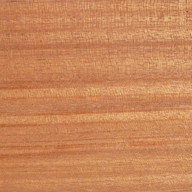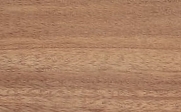Mahogany other than Swietenia: Khaya
- Gaskell Guitars Australia

- Sep 2, 2020
- 5 min read
Updated: Jun 2
Natively-grown Swietenia (American mahogany) is no longer available in the world market and commercial trade has been severely restricted since 2003. Today, new American mahogany is grown only in plantations, mainly in Asia and the South Pacific. Plantation mahogany accounts for 95% of world trade in American mahogany.
See here for an explanation for why this is: What is Mahogany?
However, Swietenia is not the only genus in the Meliaceae (Mahogany) family that yields high quality timber. The Meliaceae family consists of 49 genera with approximately 550 species. Some have timber uses and some are even used as direct replacements for Swietenia. Others are merely plants and may only produce fruit, oil and seed often used for medicines or lotions. Of the ones that do yield timber, some include the word "mahogany" in their trade name and others do not. There are two terms to know:
Genuine Mahogany as a term applies to mahogany of the Swietenia genus only, wherever grown.
True Mahogany describes the timber of any Mahogany family genus other than Swietenia. While there are biological differences between Mahogany genera and species, some are almost indistinguishable from Swietenia in both appearance and properties.
In the 21st Century the most popular Swietenia mahogany alternative is wood from the genus Khaya.
Khaya
Khaya is a Mahogany family genus that naturally occurs in tropical and sub-tropical Madagascar, the Comoros and continental Africa. It has five species, four of which are endemic to Africa and the other endemic to Madagascar. All species are collectively traded under the name African Mahogany. In trade circles, Khaya is the most accepted Mahogany family timber other than Swietenia to be called "mahogany" without qualification. All Khaya species are considered to be indistinguishable from one another based on macroscopic and microscopic features of their wood and are easily mistaken for Swietenia species.
Since genuine mahogany (Swietenia) became commercially unavailable in 2003 the Khaya species have become the most common Swietenia alternative. It is popular in the international furniture trade today and it is equally sought after as a tone wood, especially for the sides and backs of acoustic guitars and necks of electric guitars. Khaya logs were first exported to Britain in 1833 from Côte d’Ivoire. Exports from Ghana began in 1888. Today the major exporters of Khaya species are Gabon, Cameroon, Congo, Côte d’Ivoire and the Democratic Republic of Congo. The United States and China are the largest importers of this wood with Ghana, Cameroon, and Congo being the largest suppliers. Variations in trade names are usually determined by where it is sourced. The mahogany shoot borer Hypsipyla robusta is a major threat in Khaya plantations.
Commercial exploitation of wild populations of Khaya for the international timber market is considered an ongoing, primary threat to the genus. All Khaya species were assessed as globally threatened in the IUCN Red List in 1998 on the basis of unsustainable harvest for timber. In October 2022 all species of African Khaya were proposed to be added to CITES Appendix II thereafter requiring permits to trade logs, sawn wood, veneer sheets, plywood and transformed wood. This was enacted in March 2023.
High-quality, mass-produced musical instruments said to be made of "mahogany" today may be made of Khaya if not some other genuine mahogany alternative (see following.)
Khaya grandifoliola occurs in Benin, Burkina Faso, Congo, Côte d’Ivoire; Democratic Republic of the Congo, Ghana, Guinea, Nigeria, South Sudan, Sudan, Togo and Uganda and is usually traded as Heavy African Mahogany or Acajou d`Afrique, if not simply "Khaya" or "African mahogany." The colour of the timber from this species ranges from pale pink to a deeper reddish brown, sometimes with streaks of medium to dark reddish brown. It will darken with age. The duration of the planting-to-harvest rotation is 40 years, to reach 60 cm in diameter. Khaya grandifoliola is included in the IUCN Red list as a "vulnerable" due to commercial exploitation. Khaya grandifoliola timber is sometimes exported from West African countries in mixed consignments with other Khaya species, particularly Khaya anthotheca and Khaya ivorensis.
Khaya senegalensis is found in Benin, Burkina Faso, Cameroon, Central African Republic, Chad, Ivory Coast, Gabon, Gambia, Ghana, Guinea, Guinea-Bissau, Mali, Niger, Nigeria, Senegal, Sierra Leone, Sudan, Togo, and Uganda. If not simply "African mahogany" or "Khaya", it may also be traded as Dry Zone Mahogany, or Acajou Cailcedrat. The colour of this timber ranges from medium to dark reddish brown, sometimes with darker streaks. It is overall darker in colour than other Khaya species.
Logs have been exported from West Africa since the early 1800s, especially from Gambia, however it has been heavily exploited for its timber since then and is no longer a major export species, although occasionally it can be included in mixed Khaya exports. It has been planted in China (introduced 1963-1966), Malaysia (1950s originally and more recently in the early 2000’s using seeds from Australia), Sri Lanka (1970s), Brazil (1990s from trees planted in the 1970s), Thailand (2000), Vietnam, and northern Australia (1960’s and 1990’s.) Plantations in Australia today exceed 14,000 hectares.
Khaya ivorensis which is native to Cameroon, Côte d’Ivoire, Gabon, Ghana, Liberia, and Nigeria is traded as Acajou d`Afrique, Red Mahogany, or Lagos Mahogany if not simply "Khaya" or "African mahogany." It has been introduced into Angola, Central African Republic, Guinea, and Togo. K. Ivorensis may be exported with other Kaya species in mixed consignments. Wood colour ranges from pale pink to reddish brown, sometimes with medium to dark reddish-brown streaks. The colour will darken with age. Plantations have been established outside of its natural range in Fiji, Indonesia and Malaysia. In northern Brazil K. ivorensis was planted at the same time as the K. senegalensis plantations were established in the 1990s. In 2020 it was reported that Khaya plantations in northern Brazil amounted to about 50,000 hectares.
Khaya madagascariensis is found in Madagascar and Comoros (islands of Grande Comore, Mohéli and Anjouan) and is usually simply called Madagascar Mahogany. This species was included in the IUCN Red List as "endangered" in 1998 but was re-assessed as "vulnerable" in 2020 on the basis that the species has undergone a significant population decline (30%) as a result of timber harvest. The wild population of K. madagascariensis remains threatened by habitat degradation from uncontrolled fires and encroaching agriculture, despite conservation measures including protection by local communities. There is no international trade in this species of Khaya.
Khaya anthotheca grows in Angola, Guinea Bissau, Liberia, Tanzania, Uganda, Zambia, Zimbabwe and Mozambique and is traded as White Mahogany, Smooth-Barked Mahogany, Acajou D'Afrique, and Red Mahogany if not simply "Khaya" or "African mahogany." It’s appearance is indistinguishable from Khaya ivorensis. It is also grown in plantations in Southern Africa, Cuba, Puerto Rico, and in some Asian countries, mainly Indonesia (1950s), with varying success. Khaya anthotheca wood is exported from West African countries (e.g. Ghana) in mixed consignments with other Khaya species, particularly Khaya ivorensis.
The wood of K. senegalensis and K. grandifoliola resembles Swietenia more closely than the wood of K. anthotheca and K. ivorensis, but they both are heavier and harder.
References:
https://cites.org/sites/default/files/documents/E-CoP19-Prop-51.pdf
https://prota.prota4u.org/protav8.asp?h=M4&t=Khaya&p=Khaya+anthotheca#Synonyms
https://prota.prota4u.org/protav8.asp?h=M4&t=Khaya&p=Khaya+senegalensis#Synonyms
https://prota.prota4u.org/protav8.asp?h=M4&t=Khaya&p=Khaya+grandifoliola#Synonyms
https://prota.prota4u.org/protav8.asp?h=M4&t=Khaya&p=Khaya+ivorensis#Synonyms
https://prota.prota4u.org/protav8.asp?h=M4&t=Khaya&p=Khaya+madagascariensis#Synonyms
http://www.worldagroforestry.org/treedb/AFTPDFS/Khaya_ivorensis.PDF
http://www.worldagroforestry.org/treedb/AFTPDFS/Khaya_senegalensis.PDF
http://www.tropicaltimber.info/specie/acajou-dafrique-khaya-grandifoliola/
http://www.tropicaltimber.info/specie/acajou-dafrique-khaya-ivorensis/
http://www.tropicaltimber.info/specie/acajou-cailcedrat-khaya-senegalensis/
http://www.tropicaltimber.info/specie/acajou-dafrique-khaya-anthotheca/
http://www.iucnredlist.org/details/32172/0 (K. grandifoliola)
http://www.iucnredlist.org/details/32234/0 (K. ivorensis)
http://www.iucnredlist.org/details/32171/0 (K. senegalensis)
http://www.iucnredlist.org/details/32235/0 (K. anthotheca)
http://www.iucnredlist.org/details/34888/0 (K. madagascariensis)
http://www.wood-database.com/lumber-identification/hardwoods/african-mahogany/
http://thompsonmahogany.com/african-mahogany-vs-sapele-vs-utile/













Comments